-
Recent Posts
- The First Bank Failure of 2024 Leaves a 1-Cent Stock for Investors and $667 Million in Losses for the FDIC
- Catch and Kill Protection Rackets: Trump, Weinstein, Epstein and Wall Street
- Wall Street’s Judge Shopping Continues: It’s Trying to Stop the FTC’s Ban on Worker Handcuffs Known as Non-Compete Agreements
- The Fed Tallies Up a Big Threat to Financial Stability in the U.S.: “Runnables” at $21.3 Trillion
- Billionaire-Owned Media Has Gone Full Throttle to Save Fellow Billionaire, Jamie Dimon
- The Professor Who Wrote the Seminal Book on Wall Street Megabanks Calls Today’s Financial System “Dangerously Unstable”
- Gold Has Set Historic Highs this Year as the Federal Reserve Has Reported Historic Losses
- Stanford Finance Professor Anat Admati Is Making Jamie Dimon Very Nervous – Again Calling His Bank “Dangerous”
- Jamie Dimon Dumped $150 Million of His JPMorgan Stock in February; Now He Says His Regulators Want 25 Percent More Capital at his Bank
- The Black Swan Rears Its Head: The Fed Has Negative Capital Using GAAP Accounting
- New York Fed Will Not Confirm or Deny that 5-Count Felon JPMorgan Chase Is Custodian of $2.4 Trillion of Its Securities
- For the First Time in History, the Fed Is Reporting Billions in Losses Weekly; It’s Still Paying High Interest Income to the Mega Banks on Wall Street
- There’s a Revival of the Dotcom-esque Froth in Today’s Markets; Cathie Wood Is Standing in for Henry Blodget and Jack Grubman; Nasdaq Is Playing Nasdaq
- Study Finds Wall Street Mega Banks Have Overstated Income for Years on Commercial Real Estate Loans They Sell to Investors
- Jamie Dimon Huddles in Private with Biden Bigwigs as His Bank Faces More Crime Charges
- Report: Five Banks Have a Combined Half Trillion Dollars in Commercial Real Estate Loans; Number 1 is JPMorgan Chase
- Billionaire Larry Fink of BlackRock, Which Grabbed Fed Bailouts in 2020-2021, Lectures Struggling Seniors on Making More Sacrifices
- Almost 10,000 U.S. Banks Have Disappeared Since 1985, Leaving 4 Mega Banks Controlling 39 Percent of Bank Assets
- Wall Street’s Go-To Law Firm, Sullivan & Cromwell, Got in Bed with Crypto; Now Its Reputation Is Being Hammered
- More Failed Banks and Office Building Demolitions Likely Before Real Estate Problems End, Warn Two Federal Agencies
- During Spring Bank Panic of 2023, Liquidity Advances from FHLBs Topped Those of Q4 2008, when Wall Street Was in Collapse
- JPMorgan’s Federally-Insured Bank Is Fined $348 Million for Losing Track of “Billions” of Trades
- Hedge Fund Titan John Paulson Made $1 Billion in an Illegal Goldman Sachs Deal; Trump Is Now Floating Him for Treasury Secretary
- Wall Street Mega Banks Have Drawn a Law-Free Zone Around Themselves – The Media Is Complicit
- A Financial Writer at New York Times Admits He’s Been Misrepresenting Bank Capital for 14 Years
- FDIC Data Contradicts Fed Chair Powell: Shows Real Estate Problems Have Skyrocketed at Largest U.S. Banks, Not the Smaller Regionals
- Senator Elizabeth Warren Calls Fed Chair Powell “Weak-Kneed”; Says He Is “Driving Efforts Inside the Fed” to Gut Higher Capital Requirements
- Steve Mnuchin, Trump’s Treasury Secretary/Foreclosure Kingpin, Joins with Hedge Fund Guys to Grab a Teetering, Federally-Insured Bank for $2 a Share
- Wall Street Mega Banks Have Created a Circular Firing Squad with Credit Derivatives and Capital Relief Trades – with the Fed’s Blessing
- New York Community Bancorp Was JPMorgan’s Top Regional Bank Pick for 2024; It’s Lost 73 Percent Y-T-D and Had Its Deposit Rating Downgraded to Junk
- Watchdog, Better Markets, Investigates the Bank that Has Lost 65 Percent of Its Market Value in Two Months and Was Downgraded to Junk by Moody’s
- The Fed Pretends to Send a Warning to Wall Street’s Mega Banks on Derivatives and Counterparty Risk
- $87 Million Buys This for Jamie Dimon: David Boies Can’t Utter the Words “JPMorgan Chase” in a Jeffrey Epstein Sex Trafficking Case
- Jamie Dimon and Nine of His Top Executives at JPMorgan Chase Have Dumped Over $150 Million of their JPMorgan Stock in Last Two Months
- These Charts Reveal Why the Fed Is Frightened about Capital Levels at the Wall Street Mega Banks
- Wall Street Law Firm Sullivan & Cromwell Gets Sued Over Allegations It Aided and Abetted the FTX Crypto Fraud
- JPMorgan Says Its “Trading Venues” Are Under Investigation While It’s Still on Probation for Prior Trading Crimes
- Jamie Dimon Is Desperate to Pin the Jeffrey Epstein Scandal on Jes Staley; Bloomberg News Is Carrying His Water — Again
- Citigroup Is Having a Very Bad Week; Regulators Are Breathing Down Its Neck
- Five Wall Street Banks Hold $223 Trillion in Derivatives — 83 Percent of All Derivatives at 4,600 Banks
- Jamie Dimon’s Statement Last Month that Trump “Was Kind of Right About NATO,” Sounds Even More Unhinged Today
- S&P 500 Sets a Record on Wednesday as Banks Continue Tanking
- NYCB Downgraded to Junk; Shocking Charts for Citigroup, Barclays and Deutsche Bank
- Reporters Who Ask Tough Questions at Fed Press Conferences Have a Habit of Being Disappeared from the Room
- Jamie Dimon Has Spent $117 Billion Propping Up JPMorgan’s Share Price with Buybacks in 10 Years; He’s Counting on Trump’s MAGA Crowd to Rescue Him
- Bank Fraud Enters a New Era: Bank-to-Bank Wire Transfers Loot Customers
- Senator Sherrod Brown Takes on the Fed’s Support of Wealth Stripping the Middle Class
- JPMorgan Chase Has Used the Same Auditor for 58 Years, Despite Giant Frauds at the Bank in the Last Nine Years
- The Fed Has a Dirty Little Secret: It’s Been Allowing the Wall Street Mega Banks to Calculate their Own Capital Requirements
- The Battle Over Capital at the Mega Banks Must Expand to Breaking Them Up
Search Results for: repo 2019
The U.S. Treasury’s Financial Crisis Warning Bell Didn’t Ring Before the Repo Crisis of 2019 or This Year’s Bank Runs
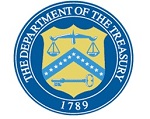
By Pam Martens and Russ Martens: November 30, 2023 ~ The Office of Financial Research (OFR) is a unit of the U.S. Treasury Department. OFR was created as part of the Dodd-Frank financial reform legislation of 2010 to keep the Financial Stability Oversight Council (F-SOC) informed about emerging threats that have the potential to spread contagion throughout the U.S. financial system — as occurred in 2008 in the worst financial crash since the Great Depression. Janet Yellen, the U.S. Treasury Secretary, chairs F-SOC. Its members include the heads of every federal banking and Wall Street regulator, who meet regularly to assess any threats on the horizon that could lead to financial instability in the U.S. One of the data charts that OFR makes available both to F-SOC and the public to assess accelerating financial problems is its Financial Stress Index. OFR describes that index as follows: “The OFR Financial Stress Index … Continue reading
Internal Charts Show Treasury Agency Assigned to Measure Risk in U.S. Markets Slept through the Repo Crisis of 2019 and the Fed’s $19.87 Trillion Bailout

By Pam Martens and Russ Martens: July 7, 2022 ~ The Office of Financial Research (OFR), a unit of the U.S. Treasury Department, was created under the Dodd-Frank financial reform legislation of 2010. Its job is to prevent, through early warnings, the kind of catastrophic financial crisis that occurred in 2008 when irresponsible and corrupt practices on Wall Street toppled the U.S. economy; brought on the deepest financial crisis since the Great Depression; and left the taxpayer and Fed bailing out the Wall Street megabanks that would have otherwise collapsed from their own hubris. Unfortunately, the OFR was savagely gutted under the Trump administration. Today, OFR is like the cop on the beat that has been stripped of his whistle, his walkie-talkie and is wearing dark sun glasses on a cloudy day. One of the tools that the OFR is supposed to use to warn federal regulators that Wall Street is … Continue reading
When Repos Blew Up in 2019, Hedge Funds Were $800 Billion Short U.S. Treasury Futures; Then Margins Blew Out
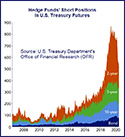
By Pam Martens and Russ Martens: February 3, 2022 ~ New details have emerged to provide a fuller picture of the turmoil that was taking place in the dark corners of markets when the overnight repo market blew up on September 17, 2019 and the Fed had to run to the rescue with trillions of dollars in cumulative loans that went on for months. Imagine if you were the Federal Reserve and had been thoroughly disgraced by waging more than a two-year court battle to prevent the press in America from doing its job and publishing the granular details of the Fed’s 2007 to 2010 bailout of Wall Street and its foreign bank derivative counterparties. Then the Fed was further disgraced after losing the court battles when in 2011 the details of the $29 trillion bailout were published. Chances are that the Fed would not be anxious to let the public … Continue reading
A Nomura Document May Shed Light on the Repo Blowup and Fed Bailout of the Gang of Six in 2019
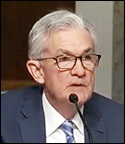
By Pam Martens and Russ Martens: January 19, 2022 ~ There are numerous reasons that members of Congress, bank regulators, and mainstream media don’t want to talk about the repo blowup in 2019 and the massive Fed bailout that followed. Economist Michael Hudson previously explained how the Fed lacked authority to bail out a handful of trading houses on Wall Street under the dictates of the Dodd-Frank financial reform legislation. Dodd-Frank restricted the Fed to using its emergency lending powers to rescue a “broad base” of the U.S. financial system. As we detailed on Monday, there was no “broad base” of the U.S. financial system being bailed out by the Fed in the last quarter of 2019: 62 percent of a cumulative $19.87 trillion in rolled-over repo loans went to just six trading houses: Nomura Securities International ($3.7 trillion); J.P. Morgan Securities ($2.59 trillion); Goldman Sachs ($1.67 trillion); Barclays Capital ($1.48 … Continue reading
Nomura, JPMorgan and Goldman Sachs Received a Cumulative $8 Trillion from the Fed’s Emergency Repo Loans in Fourth Quarter of 2019
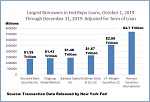
By Pam Martens and Russ Martens: January 17, 2022 ~ The Dodd-Frank financial reform legislation of 2010 ordered the Government Accountability Office (GAO), an investigative body for Congress, to audit the Fed’s alphabet soup of emergency lending programs conducted during and after the 2008 financial crisis. The GAO found that a cumulative $16.1 trillion had been pumped out to Wall Street firms by the Fed – at super cheap interest rates. The GAO provided data for the peak amounts outstanding and also a cumulative total. Why is a cumulative total essential and relevant? Because one institution in 2008, Citigroup, was insolvent for much of the time the Fed was flooding it with cheap loans. (Under law, the Fed is not allowed to make loans to an insolvent institution.) And when an insolvent institution is getting loans rolled over and over by the Fed for a span of two and a half … Continue reading
$2.7 Billion in Credit Default Swaps Blew Up One Day Before the Fed Launched Its Repo Loan Bailouts in 2019

By Pam Martens and Russ Martens: January 13, 2022 ~ On September 16, 2019, exactly one day before the Federal Reserve would embark on its first emergency repo loan operations since the financial crisis of 2008, $2.7 billion in credit default swaps (CDS) on a single name blew up. The dealers in those credit default swaps were the very same trading houses on Wall Street that sought, and received, tens of billions of dollars in repo loans from the Fed in an operation that grew to a cumulative $11.23 trillion before its conclusion on July 2, 2020. (In just the last quarter of 2019, the Fed pumped a cumulative $4.5 trillion in repo loans into Wall Street’s trading houses, according to the transaction data it released on December 30 of last year. That was before even one case of COVID-19 had been reported in the U.S.) On September 16, 2019 the … Continue reading
These Charts Are the Smoking Guns in the Fed’s 2019-2020 Emergency Repo Loan Bailouts

By Pam Martens and Russ Martens: January 7, 2022 ~ Nine days ago the Fed released the names of the Wall Street trading houses that had borrowed a cumulative total of $4.5 trillion in emergency repo loans from the Fed during just the last quarter of 2019. From September 17, 2019 through July 2, 2020, the same banks had borrowed a cumulative total of $11.23 trillion. The Fed is slowly doling out the names of the banks and the specific amounts borrowed on a quarterly basis, after eight quarters of time has elapsed. The Fed is only releasing the information because the Dodd-Frank financial reform legislation of 2010 made it a legal obligation of the Fed to do so. The Fed had fought a multi-year court battle with the press after the 2008 financial crisis to keep its secret bailouts to Wall Street firms hidden from the American people. Strange as … Continue reading
By Pancaking Term Loans, JPMorgan Had $30 Billion Outstanding from the Fed’s Emergency Repo Loans in the Last Quarter of 2019

By Pam Martens and Russ Martens: December 31, 2021 ~ Jamie Dimon, Chairman and CEO of JPMorgan Chase, likes to perpetually brag about his bank’s “fortress balance sheet.” But in the fall of 2019, that fortress needed to borrow huge sums of money from the Federal Reserve – for still unexplained reasons. The trading units of other Wall Street banks also borrowed large sums from the Fed but they haven’t branded themselves as the “fortress balance sheet.” Yesterday, the Federal Reserve Bank of New York released the names of the banks and the dollar amounts that were borrowed under its emergency repo loan operations for the last quarter of 2019. It had previously released the data for the period of September 17, 2019 through September 30, 2019. The Fed has yet to release the data for the emergency repo loan operations in 2020. Repo loans, short for repurchase agreements, are supposed … Continue reading
The Fed Is About to Reveal Which Wall Street Banks Needed $4.5 Trillion in Repo Loans in Q4 2019
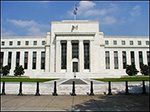
By Pam Martens and Russ Martens: December 29, 2021 ~ The conventional wisdom is that the Fed’s recent emergency lending facilities to Wall Street were caused by the COVID-19 crisis. The above chart, which uses the New York Fed’s own Excel spreadsheet repo loan data, shows the conventional wisdom is dangerously wrong. In the last quarter of 2019 – before there was any news of COVID-19 in the U.S., and months before the World Health Organization declared COVID-19 a pandemic – the Fed pumped $4.5 trillion in cumulative repo loans to unnamed trading houses on Wall Street – its so-called “primary dealers.” The collateral that the Fed accepted for the cumulative $4.5 trillion in loans consisted of $3.497 trillion in U.S. Treasury securities; $988.3 billion in agency Mortgage-Backed Securities (MBS); and $15.839 billion in agency debt. The Fed’s emergency repo loan operations began on September 17, 2019. From September 17, 2019 … Continue reading
Quietly, the Fed Releases the Names of Banks that Got Billions in Emergency Repo Loans in 2019
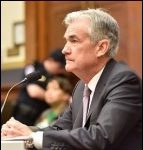
By Pam Martens and Russ Martens: October 13, 2021 ~ The Federal Reserve Bank of New York has quietly posted the names of the banks that grabbed billions of dollars under the Fed’s emergency repo loan operations that commenced on September 17, 2019 – months before there was a COVID-19 crisis anywhere in the world. The emergency repo loans were made via Open Market operations at the New York Fed. Under the Dodd-Frank financial reform legislation of 2010, the names of the banks, dollar amounts borrowed, interest rate and collateral posted must be made public “on the last day of the eighth calendar quarter following the calendar quarter in which the covered transaction was conducted.” Since the emergency repo loans were initiated in the third quarter of 2019, that meant eight quarters had passed and the public was entitled to the information for at least the month of September 2019. (The Fed … Continue reading

